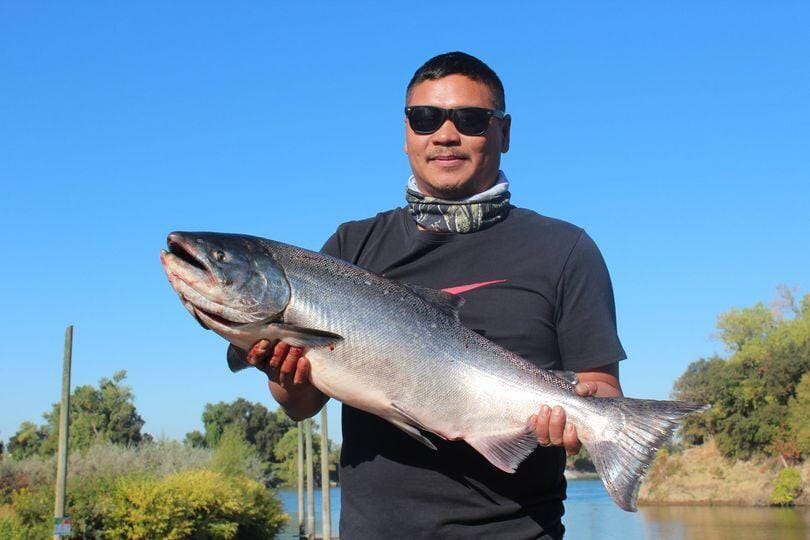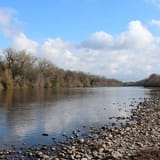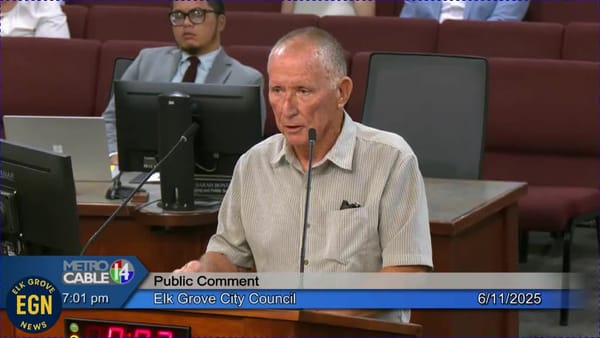Salmon and Water Groups Respond to Closure of California Commercial Salmon Fishing for Third Year
“This marks the third year in a row of no commercial fishing allocation in California and the state’s first recreational salmon season since 2022.”

San Jose — On April 15, the Pacific Fishery Management Council (PFMC) at its meeting recommended a full shutdown of all commercial fishing in California and extremely limited recreational ocean salmon fishing opportunities through the end of 2025.
The 2025 recreational ocean salmon season dates for the California coast are as follows:
- For ocean waters between the Oregon/California state line and the U.S/Mexico border, the season will open June 7-8, with a 7,000 Chinook summer harvest guideline. If the limit is not attained in those two days, the fishery will open again July 5-6. Additional dates are available in late July and August for use until the summer harvest guideline is attained.
- For ocean waters between Point Reyes and Point Sur (portions of the San Francisco and Monterey subareas), the fall fishing season will open September 4-7, with a 7,500 Chinook fall harvest guideline. If this guideline is not attained, the fishery will reopen September 29-30. Additional days are available in October between Point Reyes to Pigeon Point if any of the fall harvest guideline remains.
Save California Salmon, the Golden State Salmon Association and the California Water Impact Network (C-WIN) all responded to news of the commercial fishing season closure and the very limited recreational ocean fishing season with outrage over the failure of the state and federal governments to take the long-needed actions to restore the once abundant salmon fishery in California. They also recommended concrete steps that the state and federal agencies must take to bring back the salmon.
“This marks the third year in a row of no commercial fishing allocation in California and the state’s first recreational salmon season since 2022,” reported Save California Salmon in a press release. “Tribal subsistence fishing allocations will also be limited. This decision was made due to extremely low returns of fall, winter and spring run Chinook salmon in the Sacramento and Klamath Rivers for the third year in a row.”
“While the reopening of recreational fishing offers a small ray of hope for salmon communities, the continued closure of commercial fishing underscores the ongoing, severe impacts on California’s salmon populations caused by water mismanagement, pollution, habitat degradation, and climate disruption. Many scientists have stated that California salmon runs are now facing an extinction level crisis and have little hope for recovery unless major management changes are made,” the group stated.
“Three years without a salmon season is devastating, as is the prospect of California losing its iconic salmon runs. However, it’s not the end of the story,” said Regina Chichizola, Executive Director of SCS. “We know that salmon come back when we give rivers a chance to recover. Just last fall, we saw an unexpectedly strong response from spawning salmon just weeks after the completion of Klamath dam removal. Governor Newsom must act now to protect flows and support Tribal and fishing communities, jobs, and drinking water quality. This is a critical moment for real change.”
Kasil Willie, Staff Attorney at SCS, added, “For Tribes and fishing families, the loss of salmon fishing for another year is a total crisis, not just a closure. Salmon are collapsing because of water mismanagement, not overfishing. Closing the fisheries is a short term solution which doesn’t address California’s major water quality issues. We need more than temporary band-aids; we need a commitment to restoring our rivers.”
“Save California Salmon is calling for immediate and long-term solutions to protect and restore salmon habitats, prioritize sustainable water management, and support the communities that rely on healthy rivers and fisheries. The survival of salmon in California depends on decisive action to restore ecosystems and secure, clean, reliable water for all. The organization is also hosting trainings for Tribal communities and the public on how to engage effectively in water related decisions,” the group concluded.
These lessons and trainings can be found at https://www.youtube.com/@SaveCaliforniaSalmon/playlists
The Golden State Salmon Association (GSSA) also responded to news of the closure with a press release titled, “Failed Water Policies Spawn Unprecedented Third Salmon Season Closure.”
“AMERICAN CANYON, Calif. – Coastal towns, river communities, and tens of thousands of salmon fishermen and women, businesses, and employees that serve both the sport and commercial salmon fishery will be harmed by an unprecedented third consecutive closure of the commercial salmon season,” GSSA wrote.
“On Tuesday, the Pacific Fishery Management Council voted to close the 2025 commercial season and highly restrict sportfishing to a few days. Fisheries managers were forced to take the drastic steps in response to a forecasted low number of Sacramento River fall-run Chinook salmon. Salmon fishing is a major part of the annual income for many of these families and businesses,” the group stated.
“This closed commercial and token recreational fishing season is a human tragedy, as well as an economic and environmental disaster,” said Scott Artis, executive director of Golden State Salmon Association.
“Since 2023, salmon fishing in California has been shut down due to irresponsible water management during the last drought,” according to the group. “Excessive agricultural water diversions led to lethal river temperatures and disastrously low flows when baby salmon are trying to make it from their spawning beds to the ocean.”
“It’s not complicated,” said Barry Nelson, policy advisor for Golden State Salmon Association. “If you kill all of the baby salmon, 2 years later you don’t have enough adult salmon to support a season. That’s why our fall-run has collapsed. This problem is highlighted by the disastrous returns on the Sacramento River last fall and the all-time record returns on the Mokelumne River. Bad water management wiped out baby Sacramento River salmon 3 years ago. But Mokelumne River hatchery salmon were trucked around the river to the San Francisco Bay and ocean. This shows that ocean conditions were fine. This is a water policy problem.”
Sacramento River Fall-Run Chinook, historically the largest contributor to ocean salmon harvest off California and Oregon, have experienced dramatic declines over the last 5 years, GSSA noted.
Between 1996-2005 the average return for fall-run Chinook on the mainstem Sacramento River was 79,841 spawning salmon. In 2023 that number fell drastically to only 3,560 salmon – a 95% decline.
Similarly, spring-run Chinook have also experienced a staggering 95% decline due to a lack of cold water flows in California’s salmon rivers. The average wild and hatchery spring-run return plummeted from 28,238 fish in 2021 to just 1,231 salmon in 2023.
“This closure is a wakeup call,” said Artis. “We need to take bold action now, leave just a little more water in the rivers to protect and restore salmon, put people back to work, and save a way of life for fishermen and women, Tribes, and entire coastal and river towns. This closure comes at a frightening time for the salmon economy. Despite the collapse of Central Valley salmon runs, the federal government is working to weaken existing salmon protections – which are obviously too weak already. California must defend our salmon runs and industry against efforts in D.C. to slash protections and destroy our jobs. Currently, we are on a path to the extinction of salmon runs and fishing families. That would be one hell of a fishy legacy.”
“We call on Governor Newsom to direct the State Water Board to protect California’s salmon,” said Nelson. “The Water Board must demand cold water releases on the Sacramento River from the Bureau of Reclamation to prevent another deadly salmon die-off and set science-based flow protections for long-term recovery.”
A healthy California salmon industry is valued at $1.4 billion in economic activity and 23,000 jobs annually to the state in a normal season and contributes millions of dollars more to the economy and supports thousands of jobs in Oregon. Salmon workers benefiting from Central Valley salmon stretch from Santa Barbara to northern Oregon.
Golden State Salmon Association (www.goldenstatesalmon.org) is a coalition of salmon advocates that includes commercial and recreational salmon fishermen and women, businesses, restaurants, native Tribes, environmentalists, elected officials, families and communities that rely on salmon. GSSA’s mission is to restore California salmon for their economic, recreational, commercial, environmental, cultural and health values.
The California Water Impact Network (C-WIN) responded to news of the closure by issuing a white paper, “ The End of the Fish? C-WIN’s Take on the Third Consecutive Salmon Season Closure.
“Commercial salmon fishing in California will be closed for the third consecutive year, while regulators have allowed only a few days in 2025 for sport fishing. The decision has implications for salmon that extend far beyond the current year – all of them dire. We may never again have another commercial salmon season in California. Worse, our once abundant runs could be facing extinction,” the group wrote.
C-WIN has produced a paper on the current crisis identifying the primary drivers of California’s salmon collapse and actions that can be taken immediately to ensure the recovery of these iconic fish. Spoiler alert: it’s all about the water.
A Must-Read: Will There Be a Salmon Season — Ever Again?




